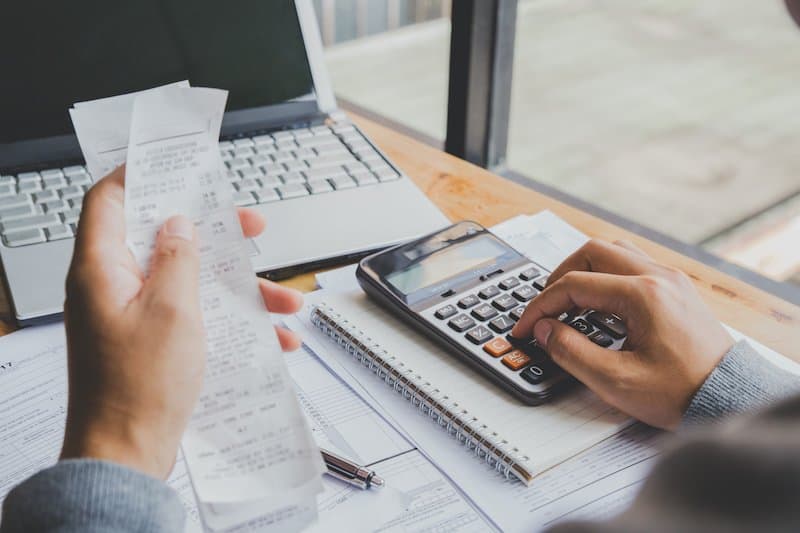Finding yourself in various types of debts can sometimes feel like falling in deeper with no clear plans of getting out. Often you are ashamed of your financial situation and wonder if it will ever end. Well, you’re not alone. This is the situation many consumers like you and I find ourselves in. From maxing out our credit limit to financing a new home.
Recent figures from the Federal Reserve say consumer debt hit a new record-breaking $14.3 trillion in the first quarter of 2020. To better understand this colossal figure, a recent Experian study found the average person had over $6,000 in credit card debt in 2019.
Which Loan Should You Pay Off First?
With several loans or debts to repay, it’s always confusing which ones to start paying off and in what order. You may wish to prioritize those debts with high-interest burdens that will ultimately impact your credit score negatively.
Alternatively, you may want to take out the smaller debts to enjoy that satisfaction of paying off your debts. Examples of these types of debts are personal loans, student loans, or Card loans.
There are 3 main approaches you can adopt when it comes to deciding on which debt to pay off first, and we will take an in-depth look at them one after the other here
- Pay Off by The Balance
- Pay Off by Interest Rates
- Pay Off by Limit Utilization
Frankly, choosing which loan to pay off first is not as clear-cut as it sounds. That is why I want you to join me as we compare these strategies with a break-down to make your decision easier.
The table below will come in handy in explaining all three approaches.
| Debt Type | Amount | Interest | Limit |
| Credit Card 1 | $5,000 | 20 % | 7,000 |
| Student Loan | $20,000 | 7.5% | No Limit |
| Credit Card 2 | $7,000 | 25% | $15,000 |
| Personal Loan | $3,000 | 0% | No Limit |
| Mortgage | $150,000 | 4% | No Limit |
Let’s dive right into it.
Pay Off By The Balance

Order by the balance was made famous by Dave Ramsey, and it’s the basis for the Total Money Makeover: The Debt Snowball.
The strategy here is to arrange your debt by their current balances. With this order now in place, the lower balance comes first. You can make minimum possible payments every month on all the debts. For the tops debts on your list, you make the most considerable amount possible.
Using this method, you will pay off debts with lower balances much faster. This will give you some feeling of relief or achievement that comes from paying off your debts and having some extra cash to attend to other obligations.
Although you still have debts to pay off, the psychological feeling you derive can serve as a massive boost for your mind. It’s a gigantic sign that you can achieve more.
If you choose to go with this strategy, the order table will look this way.
| Debt Type | Amount | Interest | Limit |
| Personal Loan | $3,000 | 0% | No Limit |
| Credit Card 1 | $5,000 | 20 % | 7,000 |
| Credit Card 2 | $7,000 | 25% | $15,000 |
| Student Loan | $20,000 | 7.5% | No Limit |
| Mortgage | $150,000 | 4% | No Limit |
The personal loan will now come first with the lowest balance. You should be able to pay that off in no time and enjoy the feeling of “one down.” You will also have a few more dollars to commit to the next batch of debts.
Why Choose This Approach
This approach is right if you’re looking for quick fixes that give a sense of satisfaction and success.
If you have a hard time keeping to goals that don’t show success, this approach will work for you. The lowest debts will be paid off first and you the larger one much later.
Pay Off By Interest Rates

Using this approach, you order your debts by the interest rate for each, with the debts with higher interests coming first and the one with the least come last on the list.
With this order in place, you make the minimum payments possible on all debts. The most significant possible extra amount goes to the debts with the highest rates.
Mathematically, this approach leads to the lowest overall total payments when compared with the others. When it comes to dollars and cents, this approach will likely give you the best results.
Based on how your debts are structured, sometimes your higher-interest debts may have a large balance and may take a relatively long time to pay off. This might be a little discouraging at first because the result would seem slow, but ultimately, you will be better off.
Your debts will be ordered in this manner when using this strategy.
| Debt Type | Amount | Interest | Limit |
| Credit Card 2 | $7,000 | 25% | $15,000 |
| Credit Card 1 | $5,000 | 20 % | 7,000 |
| Student Loan | $20,000 | 7.5% | No Limit |
| Mortgage | $150,000 | 4% | No Limit |
| Personal Loan | $3,000 | 0% | No Limit |
Why Choose This Approach
Ordering your debts by interest rate puts the highest obligations with the highest rate at the top, as reflected in the table above. This strategy results in the lowest amount of interest paid over time. This means more cash will be available to you in the long run.
Pay Off By Limit Utilization

Planning to pay off your debts using this third approach means you order your debts according to how close you are to the limit of that debt by percentage. This process will typically push the payment of credit card debts to the top of the order to be paid off first. Other traditional obligations without limits can follow.
You may decide in favor of this approach if you intend to improve your credit score. Credit utilization is a huge part of your credit score. The lower your credit utilization, the better the effect on your credit score. Preferably, it is advisable to keep your credit utilization around 20-30%.
In our table, you can see Credit card 1 has a $5,000 debt with a limit of $7,000. That is 71% credit utilization, which is not suitable for the credit score. So if improving your credit score is your focus, you may want to pay off this credit card debt first.
This approach requires a constant review of the list because your credit limit percentage will keep changing. One month you will have one debt at the top based on credit utilized, and in another month, you have a new order.
Here is what your table will look like using this order.
| Debt Type | Amount | Interest | Limit |
| Credit Card 1 | $5,000 | 20 % | 7,000 |
| Credit Card 2 | $7,000 | 25% | $15,000 |
| Student Loan | $20,000 | 7.5% | No Limit |
| Mortgage | $150,000 | 4% | No Limit |
| Personal Loan | $3,000 | 0% | No Limit |
You may arrange the last 3 debts in any order you wish. On my table here, they are placed according to the interest rates.
Why Choose This Approach
If you plan on improving your credit score for a mortgage or car loan soon, order your debts by the percentage of credit limits. Your credit cards will come up first. As you pay them off, you will reduce your credit utilization and improve your credit score too.
Bottom Line
Irrespective of what strategy you go with, with a great plan in place, you can zero in on being debt-free as fast as could be expected under the circumstances. Choose what strategy works best for you, depending on what you hope to achieve in the long run.
When you start taking care of your obligations, it’s essential to adhere to your pay off plans. This implies applying the additional money to your next most significant obligations, making further installments on your different debts, or in any event, expanding your regularly scheduled installment.
It’s additionally critical to discover approaches to remain motivated. Review your debt list from time to time and pat yourself on the back for a job well done.
Remember, you didn’t get into this overnight, so you need a lot of patience and consistency with your plans to stay up to date and debt-free very soon. See your debts as a problem that needs to be solved and not as a burden that weighs you down all the time.
Discipline will come in handy. Change your spending style. Improve your relationship with money. You will see the desired changes in your debts as they start to reduce every month due to your renewed commitment.
I will love to hear from you. What approach works best for you, even if it’s not covered here?

